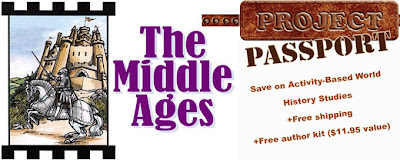Over the past few months we have struggled with figuring out what exactly is causing our van to not drive properly. It has been drivable, just not driving quite right, up until this past week. Now, we are lucky if it starts, and once it does, if we try to drive it, we are lucky if it doesn't stall out on us while we are driving. We have taken it to several different places and keep hearing different reasons as to what is causing the problems. We think we finally have the answer and it should be fixed in two weeks. In the meantime, we will need to make the 5 seater car we have work for our 7 person family. Fortunately, we do not have a lot of places we all need to be at the same time and we will figure out the logistics when we do all have to be somewhere.
To add to the vehicle issues, the laptop power cord also died last week. Fortunately, I have an unactivated iPhone that works on our wifi, so I was not completely offline, but I was rather limited. Our desktop was also available, but it is over 10 years old, runs real slow, not connected to a printer, and does not have my files on it. None-the-less, we ordered a new cord and were expecting it to come this next Saturday. You can imagine my joy when UPS delivered it today :)
In addition to all of that, we are trying to adjust to my husband returning to school and to a work injury he sustained right before school started.
So how do I handle all that is going on and manage to still do the things I need to do daily? It is not easy and there are times, whole days and sometimes weeks, where I am not quite sure how I will get through it. Here are the things that I do to maintain my sanity and survive these tougher days.
1) Remember that you are not alone. There is always someone cheering you on. If you are religious, you also have the comfort of the Holy Ghost, but if you are not, you can find someone, even a stranger, heck, even me, who does not want to see you fail. Most people want to see others succeed and there are many who will help however they can to help you do so.
Don't be afraid to ask for help if you need it. I have asked friends to help with transportation more times than I want to admit, but it has been necessary at times and always is extremely helpful.
2) Remind yourself that this is only temporary. This is easier to realize after the trial is over, but if you can remember it during the trial, it helps make it a bit easier.
3) Be prepared. The Boys Scouts know what they are talking about. Although there were several things we still could not do for school this week because they required the laptop, I still had my plan available to me. I keep a handwritten one in a binder and one on the laptop. The handwritten one has the websites I want to use written down and the one on the laptop has the links, so while I prefer the one on the laptop, I can still use the handwritten one in a pinch. Also, when it comes to things you know you will be facing, such as a schedule change, you can prepare ahead of time for the transition stage. We made a few meals and froze them and I wrote out our school plans further in advance than I typically would. I also made sure to avoid scheduling a lot of things during those first few weeks.
4) Smile. It helps no one to be miserable during difficult times. Even if you do not feel like smiling, do it anyway. Fake it 'til you make it. The simple act of smiling will usually help lift your mood anyway and smiles are contagious, so when you smile at someone else, they will likely smile back and that also helps lift your mood.
5) Don't forget to pray and study your scriptures. For me, this are the most important steps to maintaining my sanity. If you are not a religious person, I would encourage you to try it, but I understand if you don't. My advice then would be to keep a journal, where you can pour your thoughts out freely, which is helpful for everyone, religious or not.
What are some of the ways you maintain your sanity when life gets difficult?









